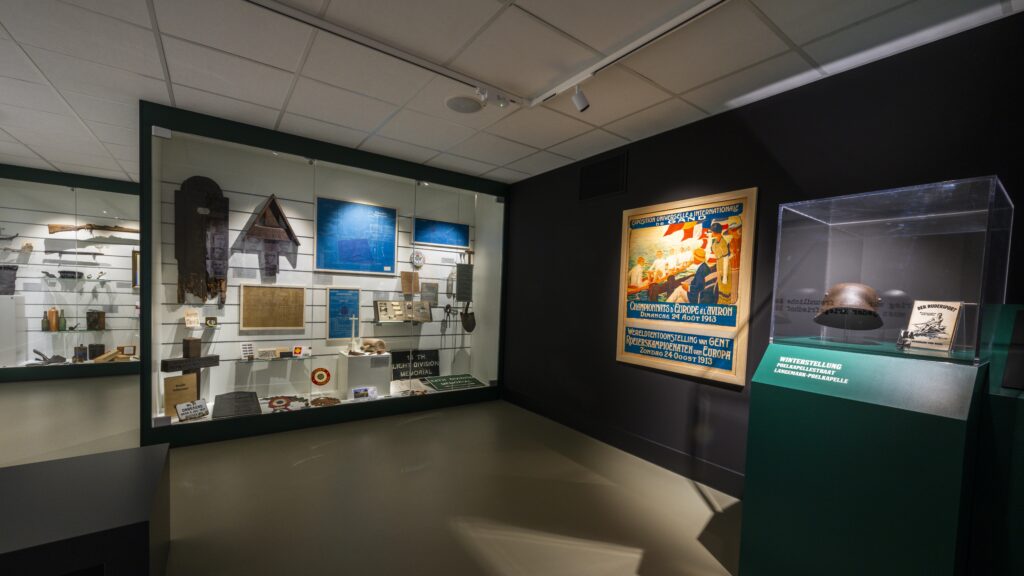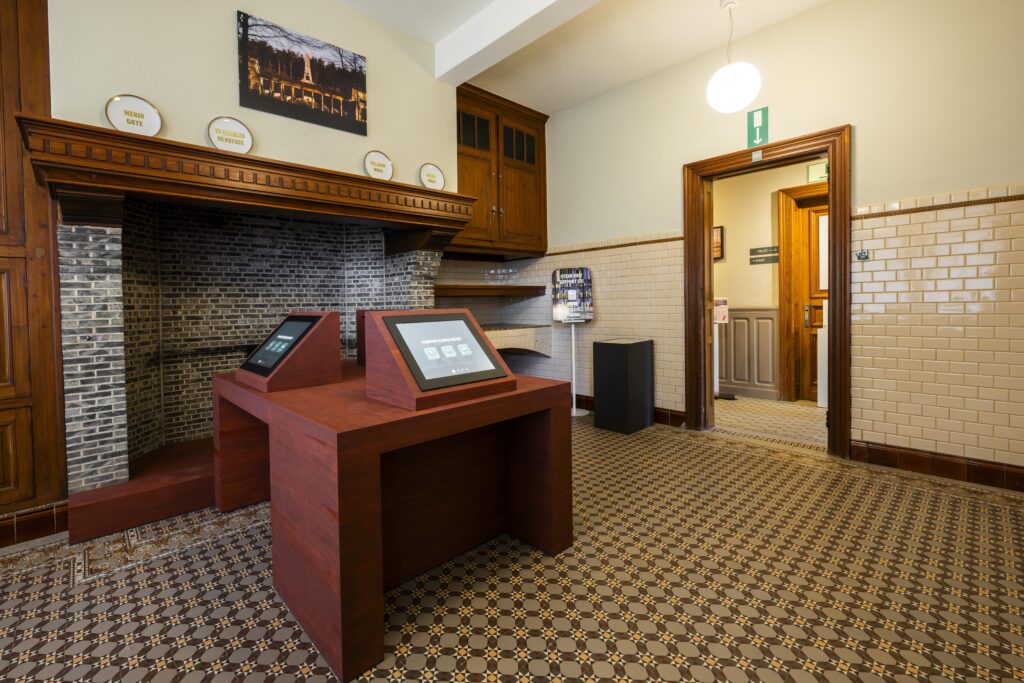In 2023 and 2024, LANDSCAPES | Feel Flanders Fields is the new theme for tourism centred on the First World War. Tourism Flanders and Westtoer are working together with various partners in the Westhoek under that heading. Following on from the 2023 Reflection Points walk and exhibition, in February 2024 the Passchendaele Museum will open a new exhibition called Echoes of War, in which the role of the landscape as witness and bearer of war stories is central.

Three layers of commemoration
The museum tells the story of the Battle of Passchendaele with the help of a multitude of sources, whether archival material, written testimony or oral history, all passed on from one generation to the next. Alongside these written or spoken sources, we regard the landscape more than ever as a final witness of the wartime past. Despite the efforts of postwar reconstruction to eliminate all traces of the war, the former battlefield remains imbued with countless tragic stories. All its places of remembrance are an integral part of the identity of the countries or peoples who fought here.
The exhibition Echoes of War illuminates the role of the landscape as bearer of the memory of the Battle of Passchendaele. The exhibition is constructed around three landscape categories that have commemorative value: military cemeteries and monuments, war relics and landscape elements.
Military cemeteries and monuments
Perhaps the most visible and moving war sites in the landscape are monuments and cemeteries. These ‘Silent Cities’ make the suffering and vast human toll of the war clear at a glance. Tyne Cot Cemetery, the Menin Gate, the German cemeteries of Langemark and Menen Wald are poignant places, where the senselessness of war becomes devastatingly clear.
War relics
Far less visible in the landscape are military structures. Most were cleared away after the war. The occasional pillboxes that remain are those that have survived the ravages of time because after the war they were transformed into storage places, stables or even cesspits. Other disturbances to the landscape of a military nature, such as craters, tunnel shafts or trenches, are concealed amid nettles and brambles, unless they have been given a new purpose as places of commemoration or are in use as destinations for sightseers. They are scars left by a conflict long past, silent witnesses to a cruel struggle.
Places of commemoration
As well as these observable, tangible remnants of the war, we can identify less obvious places of commemoration. There are countless such invisible memorial sites between Ypres and Passchendaele. What looks to the average passer-by like a simple roadside verge, the driveway of a farmhouse or a supermarket car park has a symbolic significance to someone else. In every field or wood, along every road or hedgerow, on every corner, a soldier lost his life. To this day, people still visit the places where their relatives fought or died.

Echoes of War
In the new exhibition, visitors are taken through the history of the landscape of commemoration. With the aid of personal stories in digital form, they can follow an ordinary soldier’s journey through the landscape.
At the end of the exhibition, in the chateau’s former kitchen, a digital landscape kiosk will be set up, with a multitude of local walking and cycling routes. Based on the preferences selected, a route will be proposed to the visitor. Feel like a brief woodland stroll combined with a visit to a cemetery? Then the kiosk will propose a walk around Buttes New British Cemetery, Polygon Wood. This will enable the Passchendaele Museum to take up its role as an open museum and send visitors out into the landscape.

Practical
The temporary exhibition is open until Sunday 17 November. The Passchendaele Museum is open daily from 10 AM till 5.30 PM. Entrance to the exhibition is included in the entrance ticket.